 Today, the New York City Landmark Preservation Commission votes on whether or not to add the Stonewall Inn to its calendar to be considered for landmark status. As the New York Times notes, once a venue makes it onto the calendar, the likelihood of receiving the status is all but certain.
Today, the New York City Landmark Preservation Commission votes on whether or not to add the Stonewall Inn to its calendar to be considered for landmark status. As the New York Times notes, once a venue makes it onto the calendar, the likelihood of receiving the status is all but certain.
“The agency has been working on this for some time and LGBT pride month is an ideal occasion to recommend this iconic cultural landmark,” Meenakshi Srinivasan, the commission’s chair, said in a statement.
While the West Village bar has become a national symbol of gay rights since the famous 1969 riots there, it’s hardly the only place of LGBT significance with a history that deserves to be passed down.
In fact, the Stonewall is already one of only five sites recognized as a National Historic Landmark.
How about we take this to the next level?
Our newsletter is like a refreshing cocktail (or mocktail) of LGBTQ+ entertainment and pop culture, served up with a side of eye-candy.
We thought it was as good a time as any to brush up on these four other lesser-known landmarks:
Dr. Franklin E. Kameny House, Washington D.C.

Frank Kameny began a life of LGBT advocacy after he was fired from the US Army’s Map Service in 1957 because he was gay. He co-founded the Mattachine Society of Washington with Jack Nichols, and is considered by many to be the father of gay activism. From this house, he “led his campaign against sodomy laws, helped overturn the American Psychiatric Association’s definition of homosexuality as a mental illness, lobbied against the federal government’s refusal to grant security clearances to homosexuals, and became the first openly gay candidate to run for Congress.” We take these things for granted today, but Kameny was considered a true radical of his day, and “his day” wasn’t all that long ago.
Carrington House, Fire Island, NY

Built in 1912, the Carrington house is part of the earliest wave of development on Fire Island and is the oldest surviving building in Chery Grove. New York theater director Frank Carrington acquired the house in 1927, and along with the area’s burgeoning arts community, was responsible for establishing Fire Island as a welcoming retreat for the LGBT community. The island’s remote yet accessible location made it perfect for gay visitors looking for some freedom to be themselves, if only for a short while. Carrington hosted many queer artists at the property, from New York City Ballet co-founder Lincoln Kerstein to fashion designer Bill Blass to screen legend Katharine Hepburn. It was during a stay at the house that Truman Capote wrote his 1958 novella Breakfast at Tiffany’s.
Cherry Grove Community House and Theatre, Fire Island, NY

Speaking of Fire Island, the Cherry Grove Community House and Theatre was also instrumental in establishing Fire Island as a gay refuge, and stands as the oldest continually operating gay summer theater in the United States. By the mid 1940s, a homeowner’s associated had formed on Fire Island as a de facto government. In 1948, the association founded an “Artistic Activity Group” which held theatrical performances at the Community House. “Veteran theater performers and directors such as Frank Carrington, Cheryl Crawford (co-founded the Actors Studio), and novelist Carson McCullers provided creative direction. Broadway and Hollywood actors and actresses such as Peggy Fears, Nancy Walker, and Betty Garde performed at the shows.”
James Merrill House, Stonington, CT

Pulitzer Prize-winning poet James Ingram Merrill purchased this house with his partner David Jackson in 1954, where Merrill spent summers writing works like Divine Comedies and The Changing Light at Sandover. In addition to being one of our artistic national treasures, Merrill “created the Ingram Merrill Foundation in the 1950s [which] subsidized literature, the arts, and public television, with grants directed particularly to writers and artists showing early promise.” Upon Merrill’s death in 1995, the property was converted into apartments for writers to live rent-free for twelve month residencies. The decor has been left virtually identical to when Merrill and Jackson lived there, and over thirty writers have made it a temporary home to focus on writing.
The former Chicago home of Henry Garbner, founder of the Society for Human Rights, the first American gay civil-rights organization, and the former San Francisco home of the late gay supervisor Harvey Milk are expected to make the list next.
What do you think deserves to be added?
Related Posts:
19 Epic Gay Places To Visit Before You Die
Iconic NYC Gay Bar Julius’ Eligible For National, State Landmark Status

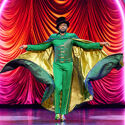


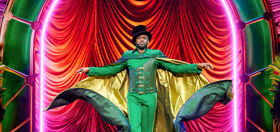







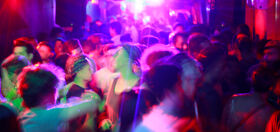
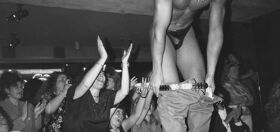



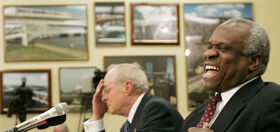

TundraMichael
I guess if it’s not on the East Coast, it doesn’t matter. Personally, I feel Harvey Milk’s camera shop should be a National Landmark if it’s not already.
Redpalacebulleaglesox
@TundraMichael: The Castro should be a National Historic District.
mujerado
In the Silver Lake neighborhood of Los Angeles, on Sunset Boulevard, a gay bar called the Black Cat Tavern was the scene of a New Year’s Eve riot against the police on Dec 31, 1966, 2½ years before Stonewall, and a subsequent community demonstration several days later. The city recognized it in 2008 as a Historic-Cultural Monument. There’s a plaque on the wall outside the current restaurant which retains the old name and the original Black Cat sign, and inside there are photographs from the events in 1966/7.
Charles Ignacio
Though it’s listed as a National Historic Landmark, I’m shocked that the Stonewall Inn doesn’t have landmark status from the New York City Landmark Preservation Commission. Hopefully that will be changed this week.
Bryguyf69
@TundraMichael: Did anything significant happen at the camera shop that affected the LGBT community? For example, was it a meeting spot for activists? Admittedly, i’m not well-versed on gay history. I personally don’t think simple gay-ownership should be enough to qualify.
Bryguyf69
@Redpalacebulleaglesox: Is being a gay enclave enough to qualify it as a landmark? For example, would DC’s Dupont Circle and NYC’s Chelsea & Greenwich Village also qualify? I’m undecided.
ax3817
Apparently, the National Park Service is making this a legit thing: http://parkplanning.nps.gov/document.cfm?documentID=59702
Presty15
What about Uranus, dude?
mujerado
@Presty15: There’s probably more interest in yours.
Bob LaBlah
@Bryguyf69: I couldn’t agree more and don’t forget to add
the men’s room at Port Authority, the old Christopher street pier (surely a photo or something along that line could be erected to salute that once upon a time open air, 24/7 bathhouse from yesteryear), the old Meat Packing District where the film Cruising was filmed as well as the bars The Anvil, Mine Shaft, Peter Rabbit, and last but not least Kellers?
TundraMichael
@Bryguyf69: Basically, that’s where the Coors boycott began, and it was Harvey’s campaign headquarters.
Bryguyf69
@TundraMichael: Sounds good to me I’m ashamed to say that I still haven’t watched Milk, although I did watch The Times of Harvey Milk in college. What you describe is coming back to me now. When we were in San Fran a few years ago, we took a tour but don’t remember going to the camera shop. I do remember seeing a barber shop that was known for its opposition to Milk. The tour guide pointed to a wall clock that has been broken since Milk’s days. She used it as a metaphor to point out that even on the Castro, there were people still “stuck in time.” The other thing I remember was how my girlfriend loved being hit on by the other women in the LGBT tour. Bitch. Good times.
Bob LaBlah
@mujerado: Sorry to get off topic here but your comment takes me back to the early-mid 1980’s when I lived right off of Santa Monica and Vermont and how now I wish an expose of how gays were treated under that sexually frustrated ass police chief Darryl Gates be done by someone out there who is in a position to bring it to light. Talk about being hell-bent to make Hitler look like a faggot (which personally I believe Hitler and J. Edgar Hoover were) Gates literally turned that force into his personal pit-bulls off a leash in gay cruising areas and around gay bars.
Not that West Hollywood and those who drove to the bars were any better off under his cohort Sheriff Sherman Block’s rule either because many of them were arrest under such b/s as refusing to take breathalyzer test that weren’t even offered but they had to prove it in court, which they couldn’t . The sheriff’s word was the law. As was the arresting LAPD officers word was in regards to lewd conduct.
mujerado
@Bob LaBlah: Darryl Gates was a villain, no doubt, but he paled in comparison to chief William Parker, namesake of the Parker Center. Parker was openly homophobic, rabidly so, and conducted organized campaigns in Griffith Park and other gay gathering places. Bathhouses, bars, cruising areas, all were kept under the LAPD’s watchful eye. Those of us who lived through both still remember the reign of terror under Chief Parker. His name on the police headquarters downtown is a lasting reminder, for those who choose to remember our past.
Clark35
@mujerado: I’m not sure why queerty didn’t mention this?
This happened in 1965.
April 25 – An estimated 150 people participate in a sit-in when the manager of Dewey’s restaurant in Philadelphia, Pennsylvania refused service to several people he thought looked gay. Four people are arrested, including homophile rights leader Clark Polak of Philadelphia’s Janus Society. All four are convicted of disorderly conduct. Members of the society also leaflet outside the restaurant the following week and negotiate with the owners to bring an end to the denial of service.